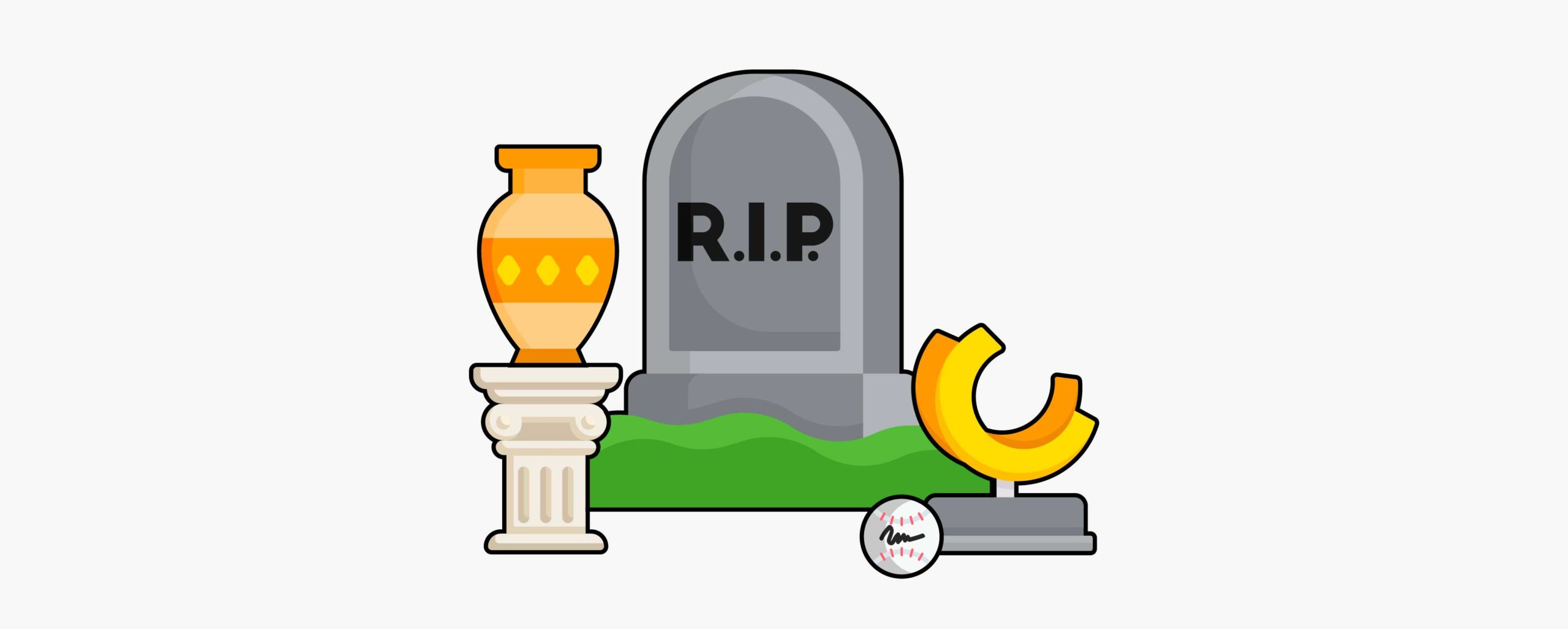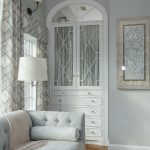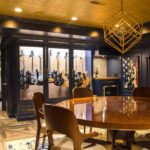
I recently came across a hilarious YouTube video on the HOMEWORTHY channel that screams to be shared. At first I thought it might make a worthy subject for a blog post on the don’ts and don’ts of interior design, but I quickly began to see that it offers so much more than that. The video provides a house tour of a 200-year-old Georgetown townhouse, owned and cherished by an eccentrically funny gay couple. The house is so stuffed to the gunnels with a detritus of furnishings, artwork, and oddball memorabilia that I was immediately convinced I had unwittingly stumbled upon a modern GREY GARDENS redux.
The video both amuses and horrifies in equal measure, in a way not unlike that strange yet riveting documentary had done so many decades ago. Similar to rubber-necking past a car wreck on the freeway, I couldn’t look way — even though every fiber of my being was willing me to do so. In a word, I was enraptured. It was one of those rare moments in life, those delicious gimmes, where we allow, if only for a second, that the universe must indeed have a sense of humor. Why else create two such delightful characters as these?
It was one of those rare moments in life, those delicious gimmes, where we allow, if only for a second, that the universe must indeed have a sense of humor.
In fairness, this Georgtown couple is in no way the product of a life which has passed them by. Tom Birch and Sydney Lawrence have both managed successful careers (Sydney worked for the Hirshhorn Museum in D.C.). They are also travel buffs who have crisscrossed the globe both for work and for pleasure, and through which they’ve managed to accumulate an extraordinary collection of objets d’art. Picture a home where every nook and cranny, every inch of wall space, is teaming with one-of-a-kind treasures. Consider, for example, a club chair whose faded green velvet cover, with vibrant yellow piping, pays tribute to fabric found in Napoleon’s home; or a carved wooden figure of St. John the Baptist, made in Columbia yet discovered at a flea market in Hong Kong, and you’ll begin to understand.
What they unceremoniously call their “disaster wall” is undeniably the pièce de résistance. It is, to the point, an art display with a disaster-related theme that includes an erupting Vesuvius they purchased in Naples and an image of a San Francisco ruin following the 1906 quake, to name but a few. There is even an old rotary phone on a lonely side table, over which they lament that the analogue signal is no longer supported by the phone company, and so it now sits as a quaint reminder of a less-hurried time when form and function were once strictly aligned.
The rotary phone now sits as a quaint reminder of a less-hurried time when form and function were once strictly aligned.
There is little doubt that these two gentlemen are masters of what amounts to a rich and full life together. They still interact with the modern world and, unlike “Big” and “Little” Edie Beale, they are neither the tragic heroes nor the impoverished figures of a long-forgotten one. No, it is abundantly clear that Tom and Lawrence’s surroundings are distinctly a matter of choice (as perplexing as some of those choices may seem) and not the unhappy consequence of misfortune or even delusion. In fact, I’d say it’s quite the reverse. For here is where these two stories diverge, and in the space between them eclecticism is born.
Yet, as I continued watching, something sobering happened, a thing that jolted me out of this voyeuristic nirvana; a harsh tonic that was undeniably true, at least in a general sense. Tom announced that they had never once considered hiring a decorator, adding that they had no interest in “matchy-matchy,” while, ironically, he did admit that things needed to be harmonious. Suffice to say that my first instinct was admittedly an embarrassing one: I wanted to holler full-throttle in the insane hope that they might actually hear my outrage through the computer screen. But then it got me thinking. There was, in part, some truth in what he said, or at least a commonly accepted belief. The fact is, most people tend to view interior designers as nothing more than the wanton warriors of the matching color scheme. Armed with their
The fact is, most people view interior designers as nothing more than the wanton warriors of the matching color scheme.
fabric swatches and paint samples, they mount a coordinated assault on an unsuspecting room, transforming its former character with a selection of three or four carefully chosen hues, elevated by a few agonizingly placed throw pillows – anathema to eclecticism. Well, I am here to tell you that this could not be further from the truth. It’s far time that we debunked this false notion and consider some of the less obvious contributions a talented designer may offer; things such as balance, proportion, contrast, and scale. And all while highlighting a client’s unique, if not demonstrably quirky, esthetic in a way that is not jarring to the senses.

Here at Verve Design, Kimberly shares an example of how she achieved this for one of her own clients. When challenged with a request to incorporate a rare and priceless collection of guitars into her design concept for a West Simsbury, Connecticut, home, she smartly responded with their musically inspired artwork, a deep-toned palette for the wainscoting and cabinetry, and shimmering brass fixtures to add an element of glamor. Entering this room, one gets a rarified sense of worshipping at the altar of rock & roll, along with its pantheon of music legends.
So what to do with the client who insists on displaying their cherished butterfly taxidermy collection in their library or study? Well, here’s a thought. How about a built-in, custom curio cabinet with textured wallpaper as a backdrop, and concealed strip lights to illuminate the vibrant colors of the butterfly wings? Similarly, beautiful wall sconces, crafted to encase the collection and display it with dramatic backlight, could also work. Original? Definitely. Quirky? No doubt. But at the same time functional, not to mention thoughtfully executed to blend with the overall aesthetic of the room. This is just one example of what a talented interior designer brings to the table; a designer, that is, who can think outside the box when addressing her client’s eclectic wants.
As the modern age moves forward, ever pushing the boundaries of technological innovation, I increasingly feel that originality has become less and less of a virtue.
As the modern age moves forward, ever pushing the boundaries of technological innovation, I increasingly feel that originality has become less and less of a virtue. An unexplainable desire to mimic the ways of others, to follow baseless trends and hackneyed styles, now rules our everyday lives. Yet, why is that? Perhaps it’s because we fear being seen as somehow different, or even odd. In the end, this fear only strips us of our individual style, diminishing that which once set us apart.

One only needs to log onto TikTok, and witness the countless content creators whose sole objective is to replicate the tired ideas of others, to know that I speak the truth. In this same way, large furniture chains have flattened out what vestige we once had of individual expression. To our detriment, the magic that once definded our unique point of view is fast slipping away. We seem to have settled for living in homogenous rooms that bear little to no imprint of our true selves.
And yet, I do get it. Original design concepts are expensive – a luxury, really. The average person can no more afford the cost of design fees — let alone the the high-end purchases that trail them — than they could a knit dress by Missoni. So at the least they are getting a rough semblance of what a good interior design might look like. But for those who are willing and able to make the investment in interior design, an investment in the one space that is solely a reflection of themselves, it is beyond worth it.
After all, what are we really, if not the sum of our individual experiences and most cherished dreams?
I see it as a solemn duty for every interior designer to push against this tide of uniformity. To not only encourage a client to shun unoriginal fads, but to help them see this as perfectly okay – if not, in fact, preferable. A designer’s daily mantra should always be, at least in part, to safeguard the ideals of eclecticism. To keep them alive and well. A driving motive must direct them toward helping a client gain a sense of pride in his or her identity. And maybe, in the end, to understand the value in an instinct to do so. After all, what are we really, if not the sum of our individual experiences and most cherished dreams? Shouldn’t we celebrate this in the one space where we can celebrate it best – in our homes? I believe we owe it to ourselves to do just that.





